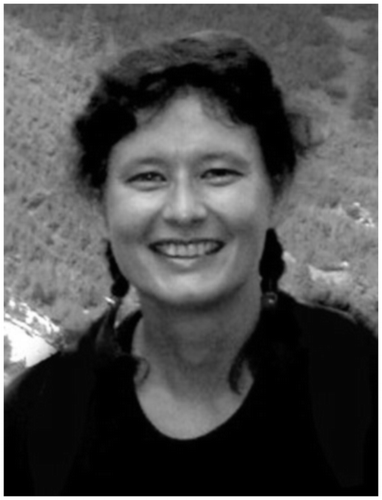
Jolana Albrechtová studied biology at Charles University in Prague. For her PhD, she joined Ivana Macháčková at the Institute of Experimental Botany of the Academy of Sciences of the Czech Republic in 1991. Her skills and interest were in the field of plant anatomy and morphogenesis, and her PhD was devoted to studies of domain formation in the apex of Chenopodium rubrum during the transition to flowering. This topic and plant accompanied her throughout all her scientific investigations after obtaining her PhD.
With much experience in microscopy work she quickly mastered electron microscopy, to analyse the formation and the number of plasmodesmata in different regions of the apex.
By this time she was already married and had a little daughter. It was admirable how well she was able to be both a good mother and a good researcher defending her thesis on schedule. By the end of 1994 she had obtained a DAAD fellowship and went with her daughter to the University of Freiburg, Germany, joining Edgar Wagner's group.
After having settled down with her daughter in Freiburg, Jolana, being obviously gifted at learning languages, became fluent in German within a single year. In her new environment, Jolana soon became a highly appreciated discussant in matters relating to both scientific and everyday life.
At work she was involved in developing methods for the in vivo measurement of pH and Ca2+ concentration in plant tissues (by using fluorescent dyes and confocal laser scanning microscopy) and in analysing changes in geometry of the apical meristem (via cryo-scanning electron microscopy). She was able to show that changes in apex morphology prior to the start of cell division were indicative of turgor-mediated changes in polarity, and that specific changes in pH and Ca2+ in the apical meristem were abolished by a pulse of red light and reversed by treatment with light in the far-red region of the spectrum—a crucial response in photoperiodic control of flowering.
Jolana integrated graduate and PhD students into her work and, profiting from the molecular analysis of flowering in Arabidopsis, she developed the molecular biology of Chenopodium as a model system for photoinduction of flowering. She achieved this by analysing the interplay between external signals and internal transduction networks. This research led to the isolation of a FLORICAULA/LEAFY ortholog of Chenopodium rubrum and to findings on aquaporin expression related to the process of floral transition. The electrogenic induction of flowering in relation to changes in the molecular markers is only now beginning to be analysed.
Jolana was an excellent teacher, both in the classroom and with her co-workers. She showed high determination and standards, and was always helpful and looking to find solutions to difficult situations. Her constant engagement and her creativity in research and teaching earned her, in 2004, her “Habilitation” and “Venia legendi” with the topic: “How apical meristems achieve floral transition. A new model based on kinetics of early molecular and physiological responses to photoperiodic flower induction”. Thus, she became a “Privat Dozent” at the Faculty of Biology, University of Freiburg.
Jolana was killed on 29 November in a traffic accident on her way to an audition in Ceske Budejovice.
Her qualities as a mother and a scientist, obvious right at the start of her scientific career, would have been fundamental to her future private and professional life. We can be grateful for her friendship, her affection and sharing of creativity at work and her lifelong companionship.
She shared her love for life with family and friends—whether in hiking through the countryside, playing the saxophone in a big band, singing, or as a devoted dancer. Most importantly, in recent years, she took up horse riding and, together with her daughter, cared for their horse.
Those who knew her closely miss her with deep sorrow. The only consolation is the belief that we will meet her again one day on “the other side”.